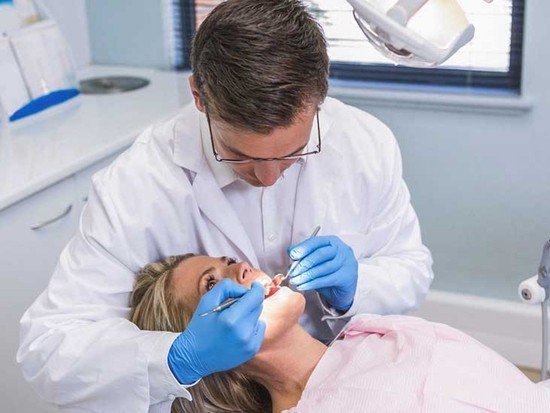
In the ever-evolving landscape of modern dentistry, the integration of advanced imaging technologies is paramount for enhancing diagnostic accuracy and patient care. Among these innovations, phosphor plates have emerged as a transformative tool in radiographic practices. These flexible, lightweight imaging plates offer significant advantages over traditional film and even some digital systems, making them an attractive option for dental professionals seeking to optimize their clinical workflows. Phosphor plates capture high-resolution images while minimizing radiation exposure, thereby ensuring patient safety and comfort without compromising diagnostic quality. Their ability to be reused multiple times further adds to their cost-effectiveness, making them a sustainable choice for dental practices. Additionally, the ease of use and quick processing times associated with phosphor plates enhance operational efficiency, allowing practitioners to focus more on patient interaction and treatment planning. As the dental industry continues to embrace digital advancements, understanding the myriad benefits of phosphor plates becomes essential for practitioners aiming to elevate their practice and improve patient outcomes. Upgrade your clinic’s imaging technology with the best Dental Phosphor Plate for Dental Practice, available at Universadent. This article will explore the key advantages of phosphor plates in modern dentistry, highlighting their role in shaping the future of dental radiography and enhancing the overall patient experience.
Enhanced image quality for accurate diagnostics
High-resolution images are crucial for effective diagnostics in dentistry, as they facilitate the detection of subtle pathologies that may not be visible with lower-quality imaging techniques. The use of advanced imaging technologies, such as phosphor plates, significantly enhances the clarity and detail of dental radiographs. This improved image quality allows practitioners to identify issues such as caries, periodontal disease, and other anomalies with greater precision, leading to earlier interventions and more effective treatment plans.
Additionally, enhanced image quality supports better communication between dental professionals and patients by providing clear visual evidence of dental conditions. Patients are more likely to understand their oral health issues when presented with high-quality visuals, which can bolster trust and encourage greater engagement in their treatment process. Ultimately, the advancement in imaging technology not only improves diagnostic accuracy but also elevates the overall standard of care in dentistry.
Reduced radiation exposure for patient safety
Implementing advanced imaging techniques, such as phosphor plates, contributes to a significant reduction in radiation exposure for patients, thereby enhancing safety during dental procedures. These systems require less radiation to capture high-quality images compared to traditional film-based radiography. This decrease in exposure is particularly crucial for vulnerable populations, such as children and patients requiring multiple radiographic evaluations, where minimizing cumulative radiation dose is essential.
Furthermore, the ability to quickly and efficiently capture images with phosphor plates allows for immediate retakes if necessary, ensuring that patients are not subjected to unnecessary radiation. This commitment to patient safety aligns with the principles of responsible radiological practices, where the benefits of imaging are maximized while potential risks are minimized. As dental practices continue to adopt these advanced technologies, patient well-being remains a top priority, fostering a safer environment for diagnosis and treatment.
Environmentally friendly alternative to traditional films
Moreover, the transition to phosphor plates significantly reduces the environmental impact associated with traditional film processing. Traditional radiographic films require a series of chemical solutions for development, which can lead to hazardous waste and environmental contamination if not disposed of properly. In contrast, phosphor plates are reusable and eliminate the need for harmful chemicals, thereby promoting a more sustainable approach to dental imaging.
Additionally, the digital nature of phosphor plates allows for easier storage and sharing of images, reducing the need for physical storage solutions that consume space and resources. By adopting these environmentally conscious practices, dental professionals not only contribute to a healthier planet but also align their operations with growing public expectations for sustainable healthcare practices. This shift highlights the profession’s commitment to both patient care and environmental stewardship.
Faster processing time for efficient workflow
The implementation of phosphor plates in dental practices streamlines the imaging process, significantly enhancing overall workflow efficiency. Unlike traditional film, which requires time-consuming chemical processing and development, phosphor plates enable immediate digital capture of images, allowing for quicker diagnosis and treatment planning. This expedited processing time reduces patient wait times and optimizes the scheduling of appointments, ultimately improving the overall patient experience.
Moreover, the rapid access to high-quality images facilitates better communication among dental teams and enhances collaboration with specialists. The ability to swiftly retrieve and share digital images fosters timely decision-making and supports comprehensive treatment strategies. By minimizing delays in the imaging process, dental practices can achieve a more efficient operation, leading to increased productivity and ultimately better patient outcomes.
Cost-effective solution for dental practices
Adopting phosphor plates presents a financially advantageous option for dental practices looking to modernize their imaging systems without incurring the significant costs associated with conventional digital X-ray equipment. These plates are considerably less expensive than traditional digital sensors, which often require substantial upfront investment and ongoing maintenance costs. Additionally, the durability of phosphor plates reduces the need for frequent replacements, further contributing to long-term savings.
Furthermore, the transition to a digital workflow through phosphor plates eliminates the ongoing expenses tied to film and chemical processing, allowing practices to allocate resources more effectively. This cost efficiency not only supports the financial health of the practice but also enables dentists to offer competitive pricing to patients, potentially attracting a broader clientele. By embracing this innovative imaging technology, dental practices can maximize their profitability while maintaining high standards of care.
Conclusion
The integration of phosphor plates in modern dentistry marks a significant advancement in diagnostic imaging. Their ability to provide high-quality images with reduced radiation exposure enhances patient safety and comfort, while also streamlining the workflow for dental professionals. With features such as cost-effectiveness and ease of use, phosphor plates offer a practical alternative to traditional film and digital sensors. As the dental field continues to evolve, the adoption of phosphor technology not only improves the accuracy of diagnoses but also fosters a more efficient practice environment. Embracing these innovations ultimately leads to better patient outcomes and a higher standard of care in dentistry.

